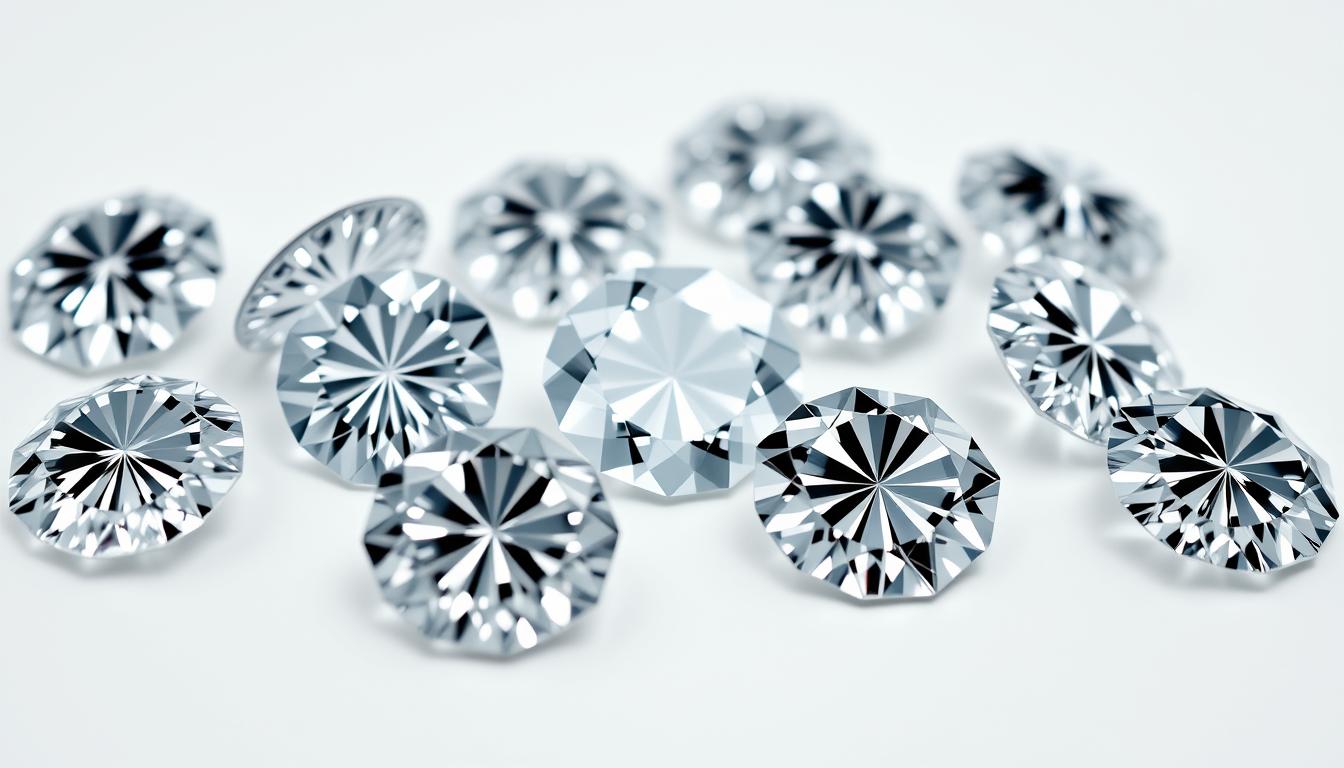Imagine owning a stunning diamond that’s not only breathtakingly beautiful but also eco-friendly and budget-friendly. Lab-grown diamonds have revolutionized the jewelry industry, offering consumers an ethical and sustainable alternative to traditional mined diamonds.
The market for lab-grown diamonds has expanded significantly in 2024, with numerous retailers offering a diverse range of high-quality stones in various cuts, colors, and carat weights. Whether you’re looking for the perfect diamond for an engagement ring or a special piece of jewelry, this comprehensive guide will help you navigate the world of lab-grown diamonds and make an informed purchase decision.
Understanding Lab Grown Diamonds
Lab-grown diamonds have revolutionized the diamond industry with their unique characteristics and sustainable production process. As a result, consumers are increasingly turning to these diamonds as a viable alternative to traditional mined diamonds.
What Are Lab Grown Diamonds?
Lab-grown diamonds, also known as cultured diamonds, are created using advanced technological processes that replicate the natural conditions under which diamonds form. These diamonds are chemically, optically, and physically identical to natural diamonds, making them nearly indistinguishable from their mined counterparts. According to a recent statement by a leading industry expert, “Lab-grown diamonds represent a significant shift in the diamond industry, offering consumers a more sustainable and responsible choice.”
Creation Process: HPHT vs. CVD
The creation process of lab-grown diamonds involves two primary methods: High-Pressure High Temperature (HPHT) and Chemical Vapor Deposition (CVD). The HPHT method recreates the extreme conditions found deep within the Earth’s mantle, using high pressure and temperature to form diamonds. On the other hand, CVD involves depositing carbon atoms onto a diamond seed using a gas-rich environment. As noted by industry specialists, each method produces diamonds with distinct characteristics, such as varying levels of clarity and inclusions.
The differences between HPHT and CVD diamonds are notable. HPHT diamonds often have higher clarity but may contain metallic inclusions, while CVD diamonds may have fewer inclusions but can sometimes exhibit a brownish tint. Understanding these differences is crucial for consumers looking to purchase lab-grown diamonds.
Benefits of Choosing Lab Grown Diamonds
Choosing lab-grown diamonds comes with a multitude of advantages, from environmental benefits to superior quality and affordability. Lab-grown diamonds are becoming increasingly popular due to their numerous benefits over traditional mined diamonds.
Ethical and Environmental Advantages
Lab-grown diamonds offer significant ethical and environmental advantages. Unlike traditional diamond mining, which can have devastating environmental impacts and raise ethical concerns, lab-grown diamonds are created in a controlled environment. This process eliminates the need for large-scale mining, reducing the carbon footprint and ensuring that the diamonds are conflict-free.
Cost Comparison with Natural Diamonds
One of the most significant benefits of lab-grown diamonds is their cost-effectiveness. Generally, lab-grown diamonds are 30-40% less expensive than their natural counterparts. This price difference is due to the reduced production costs and the absence of distribution markups associated with mined diamonds. As a result, consumers can purchase a higher quality or larger lab-grown diamond for the same price as a lower quality natural diamond.
Quality and Appearance Factors
Lab-grown diamonds are known for their exceptional quality and appearance. The controlled growth process allows for precise control over the diamond’s characteristics, resulting in stones with fewer inclusions and consistent quality. Lab-grown diamonds display the same brilliance, fire, and sparkle as natural diamonds, making them virtually indistinguishable without specialized equipment. This means consumers can enjoy high-quality diamonds with superior brilliance and sparkle.
The 4Cs of Lab Grown Diamonds
Lab-grown diamonds, like their natural counterparts, are evaluated based on the 4Cs: cut, color, clarity, and carat weight. Understanding these elements is crucial for making an informed purchase decision.
Cut: Maximizing Brilliance and Sparkle
The cut of a lab-grown diamond refers to its proportions, symmetry, and polish. A well-cut diamond can appear more brilliant and fiery, regardless of its other characteristics. The cut is considered the most important factor in determining the diamond’s overall appearance.
Color: Finding the Perfect Shade
Diamonds are available in a range of colors, from colorless to having a distinct hue. The color grading scale ranges from D (colorless) to Z (light yellow or brown). The closer to colorless the diamond is, the higher its value.
Clarity: Understanding Inclusions
The clarity of a diamond refers to the presence or absence of inclusions and blemishes. Clarity is graded on a scale from Flawless (FL) to Included (I). The clarity grade affects the diamond’s transparency and brilliance.
Carat Weight: Size Considerations
Carat weight measures a diamond’s mass, not its size. Lab-grown diamonds are available in various carat weights, offering flexibility in choosing the perfect size within a budget. The price increases with carat weight, but at a lower rate than natural diamonds.
- Carat weight influences the diamond’s price and appearance.
- Popular carat weights include those just under whole or half carat marks.
- The face-up appearance is affected by the diamond’s cut and shape.
In conclusion, understanding the 4Cs of lab-grown diamonds is essential for selecting a diamond that meets your preferences and budget. By considering cut, color, clarity, and carat weight, you can find the perfect lab-grown diamond for your needs.
Best Lab Grown Diamonds for 2024
As we step into 2024, the world of lab-grown diamonds is more vibrant than ever, offering a plethora of choices for the discerning buyer. This year, several top brands are making waves with their sustainable, high-quality diamond jewelry.
Brilliant Earth: Sustainable Luxury
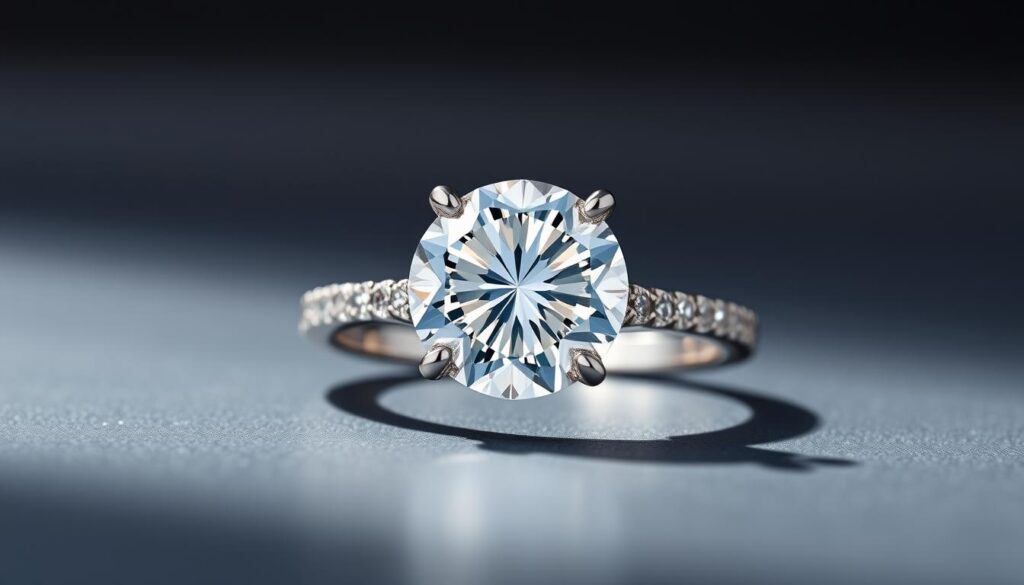
Brilliant Earth is renowned for its commitment to sustainability and luxury. Their lab-grown diamond collection offers exceptional quality and eco-friendly options for those seeking high-end jewelry without the environmental impact.
Clean Origin: Exceptional Value
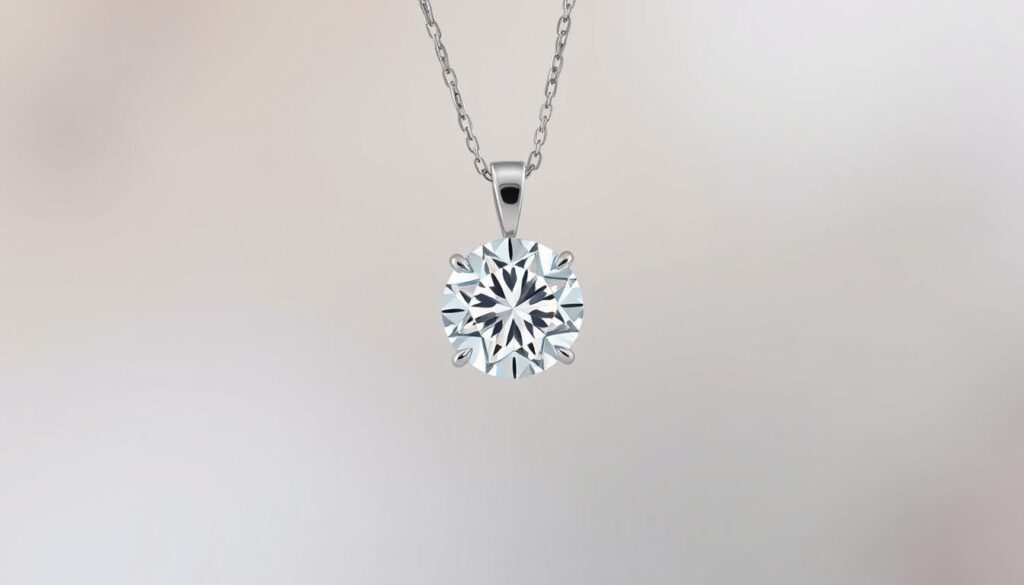
Clean Origin stands out for providing exceptional value without compromising on quality. Their lab-grown diamonds are crafted with precision, offering customers a guilt-free and affordable alternative to traditional diamonds.
James Allen: Superior Selection
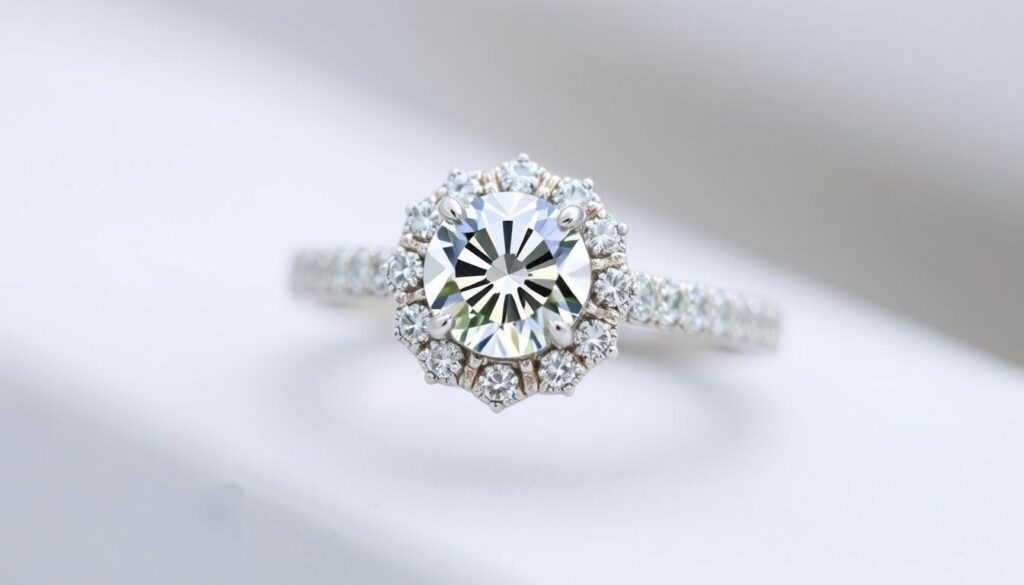
James Allen is celebrated for its vast selection of lab-grown diamonds, offering customers a wide range of choices in terms of cut, color, and clarity. Their superior quality diamonds are designed to maximize brilliance and fire.
VRAI: Zero-Emission Diamonds
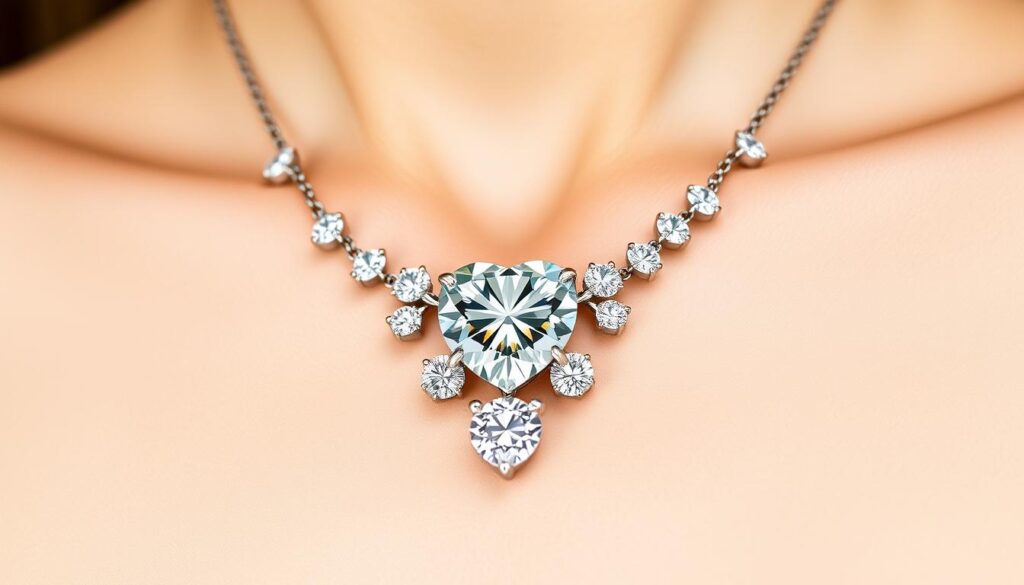
VRAI is a pioneer in the lab-grown diamond industry, known for creating zero-emission diamonds using 100% hydropower from the Columbia River. Their commitment to sustainability extends beyond their diamonds to their packaging and business practices, offering an end-to-end eco-conscious luxury experience. VRAI’s vertical integration ensures complete traceability and quality control, from carbon to finished jewelry piece.
These brands are redefining the lab-grown diamond market with their innovative approaches to sustainability, quality, and customer satisfaction. Whether you’re looking for luxury, value, or a wide selection, there’s something for everyone in 2024.
How to Choose the Perfect Lab Grown Diamond
To find the perfect lab-grown diamond, one must consider various important elements. The decision-making process involves evaluating several factors to ensure that the chosen diamond meets your expectations and preferences.
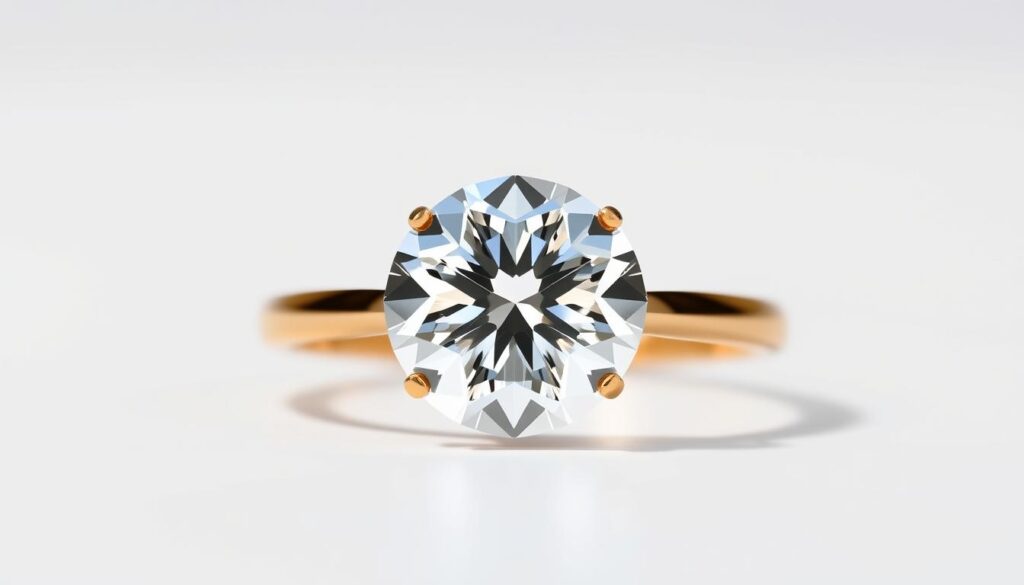
Certification and Grading Standards
When choosing a lab-grown diamond, it’s crucial to consider its certification and grading standards. Reputable organizations like the Gemological Institute of America (GIA) or the International Gemological Institute (IGI) provide certifications that verify the diamond’s quality and characteristics. Look for diamonds with detailed grading reports to ensure you’re getting a high-quality stone.
Budget Considerations
Determining your budget is a critical step in selecting a lab-grown diamond. Lab-grown diamonds offer a cost-effective alternative to natural diamonds, but prices can still vary significantly based on factors like size, quality, and cut. Setting a clear budget will help narrow down your options and guide your decision-making process.
Personal Style and Preferences
Your personal style and preferences play a significant role in choosing the right lab-grown diamond. Consider the type of jewelry you prefer, your lifestyle, and how you want the diamond to be showcased. As noted by experts, “A well-chosen setting can enhance the diamond’s beauty and make a lasting impression.” Think about whether you prefer classic and timeless or contemporary and unique designs.
Some key considerations include the diamond’s shape, the setting’s style, and the metal type. For instance, round brilliant cuts are timeless, while fancy shapes like oval or cushion cuts can make distinctive style statements. Your choice should reflect your individual aesthetic and needs.
Popular Jewelry Settings for Lab Grown Diamonds
With their exceptional quality and affordability, lab-grown diamonds are becoming increasingly popular in various jewelry settings. This trend is driven by the versatility and elegance that lab-grown diamonds bring to different types of jewelry.
Engagement Ring Settings
Lab-grown diamonds are a popular choice for engagement rings due to their brilliance and durability. They offer a sustainable and cost-effective alternative to mined diamonds without compromising on quality or appearance.
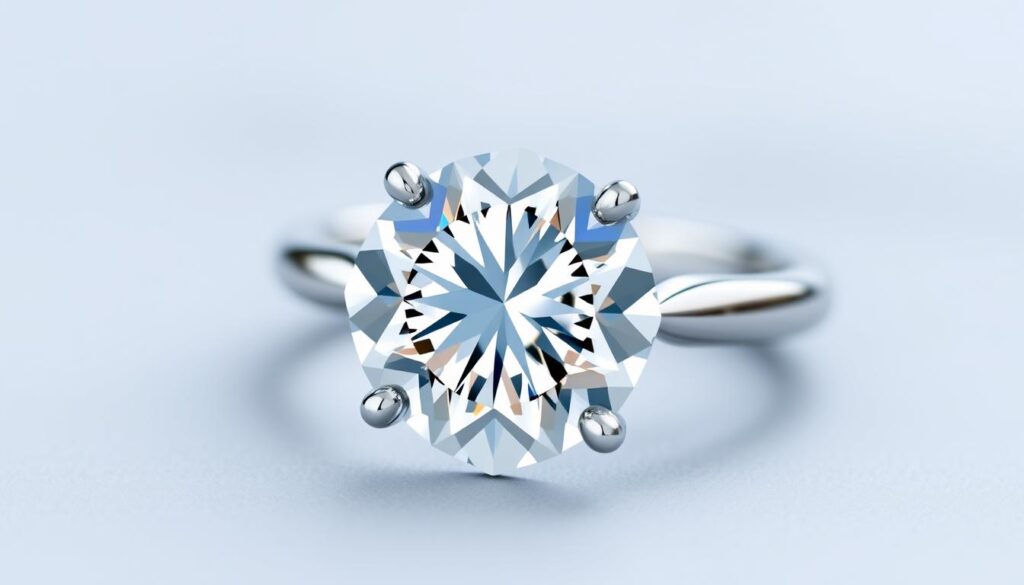
Wedding Bands and Anniversary Rings
For wedding bands and anniversary rings, lab-grown diamonds add a touch of luxury and sophistication. They are available in various settings, from simple solitaire bands to intricate designs featuring multiple diamonds.
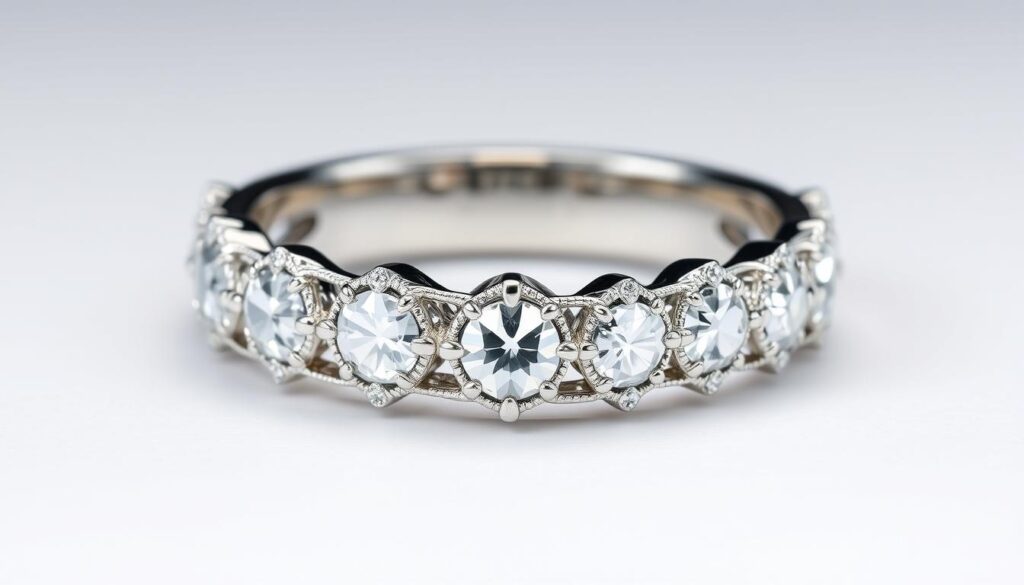
Fashion Jewelry Options
Lab-grown diamonds are also making a significant impact in fashion jewelry, with designs ranging from elegant stud earrings to glamorous drop earrings and pendants. Their affordability and quality make them an attractive choice for everyday wear and special occasions.
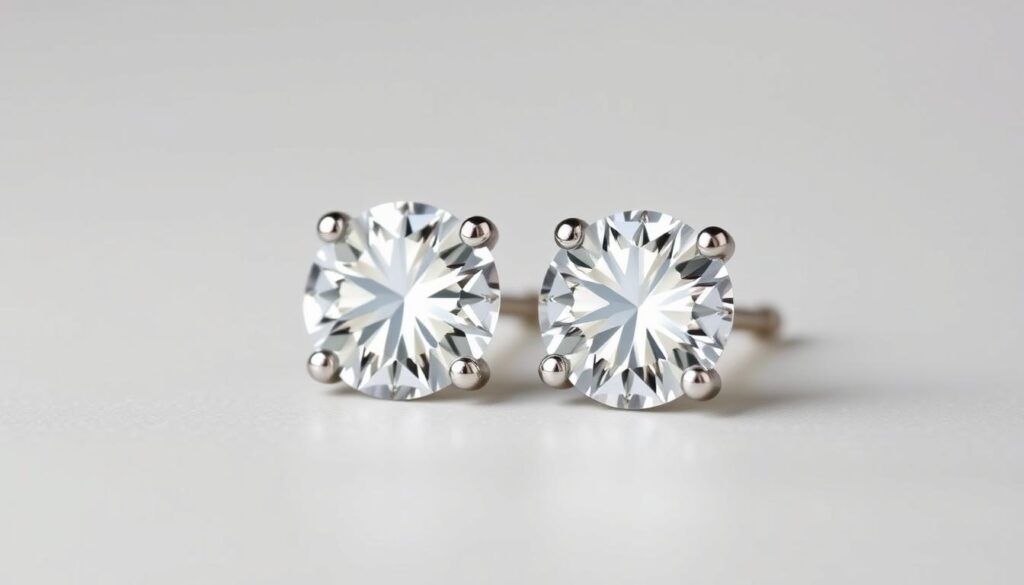
Some popular fashion jewelry options featuring lab-grown diamonds include:
- Tennis bracelets that offer a classic and luxurious look
- Stud earrings that provide timeless elegance
- Pendant necklaces that make perfect milestone gifts
- Fashion-forward designs like ear climbers and layered necklaces
- Cocktail rings that make bold statements
These jewelry pieces not only showcase the beauty of lab-grown diamonds but also offer a more affordable entry point into the world of fine jewelry.
Caring for Your Lab Grown Diamond Jewelry
To keep your lab-grown diamond jewelry shining, regular maintenance is crucial. Proper care ensures that your diamond remains brilliant and continues to sparkle.
Cleaning and Maintenance Tips
Cleaning your lab-grown diamond jewelry regularly is essential. Use mild soap and warm water to clean your jewelry, and avoid harsh chemicals that can damage the metal settings. A soft-bristled toothbrush can help remove dirt from intricate designs.
Storage and Protection Recommendations
Store your lab-grown diamond jewelry in a separate, lined compartment to prevent scratches. Consider using individual soft pouches or compartments within your jewelry box. When traveling, use a dedicated travel jewelry case with individual compartments to keep your pieces safe.
By following these simple care tips, you can enjoy your lab-grown diamond jewelry for years to come. Regular maintenance and proper storage will keep your diamond shining brightly.
Lab Grown vs. Natural Diamonds: Making the Right Choice
Understanding the differences between lab-grown and natural diamonds is crucial for making an informed decision. Lab-grown diamonds are optically identical to natural diamonds, displaying the same fire, brilliance, and sparkle that make diamonds so captivating and desirable.
Comparing Long-Term Value
When considering long-term value, it’s essential to note that lab-grown diamonds have the same hardness (10 on the Mohs scale) and durability as natural diamonds. This means they will maintain their beauty for generations. The controlled environment of diamond creation often results in fewer inclusions and higher clarity grades in lab-grown diamonds compared to natural diamonds in similar price ranges.
Addressing Common Misconceptions
Several misconceptions surround lab-grown diamonds. Here are a few facts:
- Lab-grown diamonds are not “fake”; they have the same chemical composition and crystal structure as mined diamonds.
- Even expert gemologists require specialized equipment to distinguish between lab-grown and natural diamonds.
- The market for lab-grown diamonds is stabilizing as consumer demand increases, contrary to the belief that prices will drop dramatically.
By understanding these facts, consumers can make a more informed decision when choosing between lab-grown and natural diamonds.
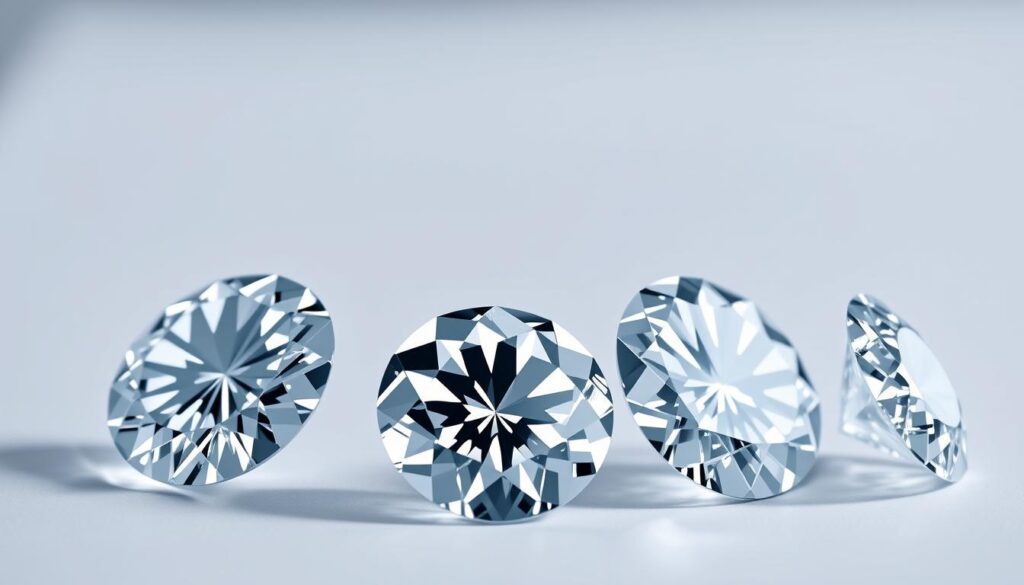
Conclusion: Embracing the Future of Diamond Jewelry
As we look to the future of fine jewelry, lab-grown diamonds stand out as a beacon of innovation and sustainability. By understanding the benefits and characteristics of lab-grown diamonds, consumers can make informed choices that align with their values and preferences.
Whether you’re looking for an engagement ring, a special gift, or a personal indulgence, lab-grown diamonds offer a brilliant, ethical, and cost-effective alternative to traditional diamonds. With their exceptional brilliance and sparkle, they provide endless possibilities for stunning, sustainable jewelry.
By choosing lab-grown diamonds from reputable retailers and caring for them properly, you’ll enjoy fine jewelry that maintains its beauty for generations while contributing to a more sustainable future for the diamond industry.
